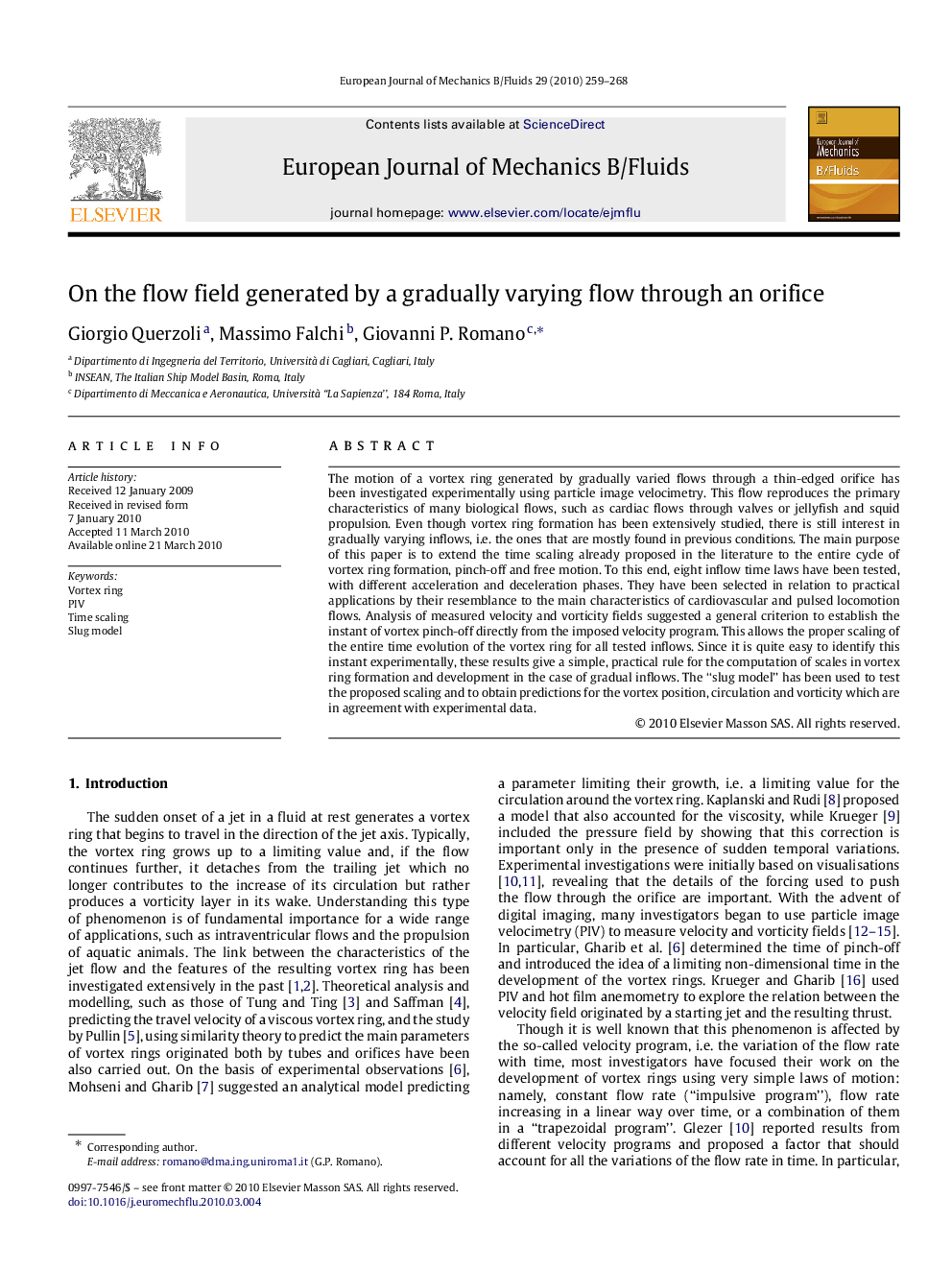| Article ID | Journal | Published Year | Pages | File Type |
|---|---|---|---|---|
| 650699 | European Journal of Mechanics - B/Fluids | 2010 | 10 Pages |
The motion of a vortex ring generated by gradually varied flows through a thin-edged orifice has been investigated experimentally using particle image velocimetry. This flow reproduces the primary characteristics of many biological flows, such as cardiac flows through valves or jellyfish and squid propulsion. Even though vortex ring formation has been extensively studied, there is still interest in gradually varying inflows, i.e. the ones that are mostly found in previous conditions. The main purpose of this paper is to extend the time scaling already proposed in the literature to the entire cycle of vortex ring formation, pinch-off and free motion. To this end, eight inflow time laws have been tested, with different acceleration and deceleration phases. They have been selected in relation to practical applications by their resemblance to the main characteristics of cardiovascular and pulsed locomotion flows. Analysis of measured velocity and vorticity fields suggested a general criterion to establish the instant of vortex pinch-off directly from the imposed velocity program. This allows the proper scaling of the entire time evolution of the vortex ring for all tested inflows. Since it is quite easy to identify this instant experimentally, these results give a simple, practical rule for the computation of scales in vortex ring formation and development in the case of gradual inflows. The “slug model” has been used to test the proposed scaling and to obtain predictions for the vortex position, circulation and vorticity which are in agreement with experimental data.
